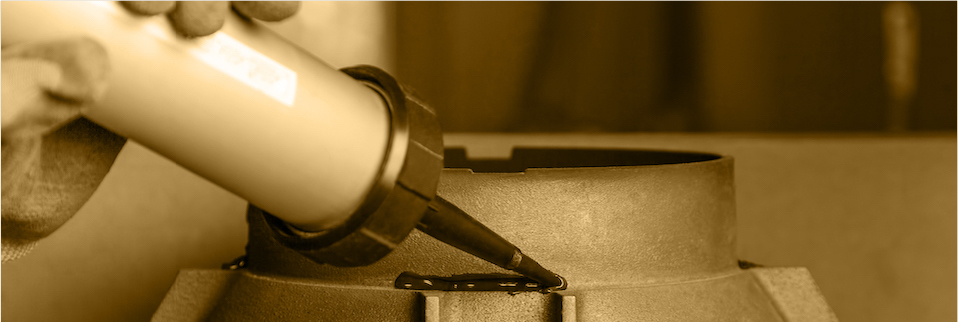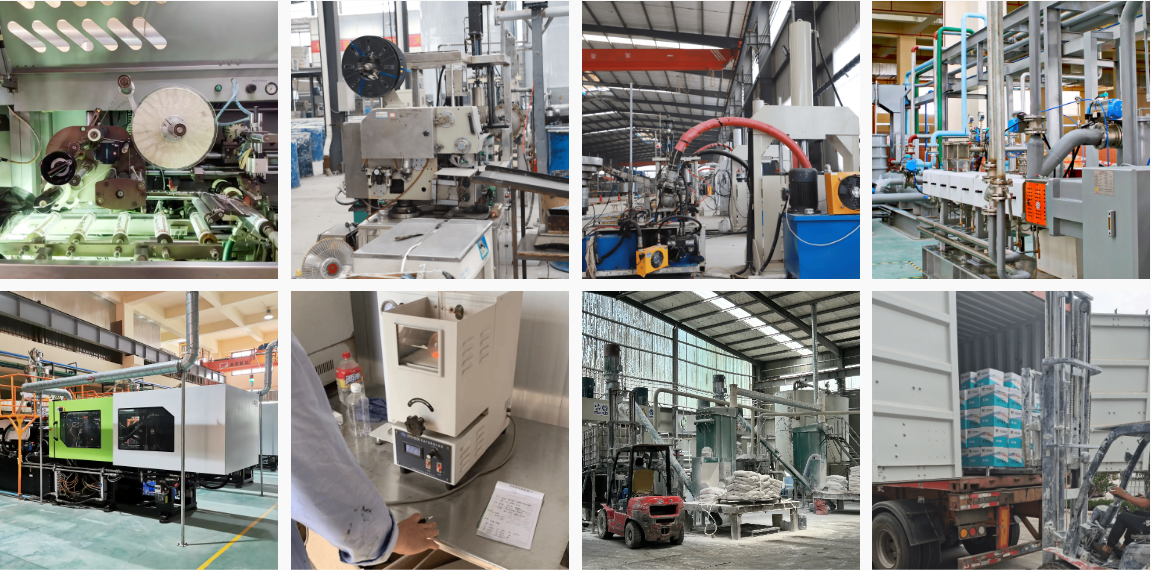Оглавление
- 1. Introduction to the Industry
- 2. Core Manufacturing Capabilities and Expertise
- 3. Quality Assurance and Compliance Standards
- 4. Innovation and Research Development
- 5. Market Specialization and Application Expertise
- 6. Global Supply Chain and Distribution Channels
- 7. Choose a Good Manufacturer: Determine What an Ideal One Is
- 8. Prospective trends in the manufacturing of silicone sealant
Introduction to the Industry
Силиконовый герметик silicone & acetoxy bonding agents As suppliers to a high end speciality of the chemical manufacturing business – silicone sealant and other factor compounds are the key ingredients that are exchanged into several commercial applications, with one known and trusted name Silicone.ie offering various types of specialist material in building, automative, electronics and hundreds of household uses. These makers fabricate items with astounding toughness, versatility and resistance to challenging temperature devices, moisture in addition to environmental hurt. These producers’ role is more than just mixing: they must guarantee consistent quality, performance and reliability in products that are crucial to the sealants of high-rise buildings, cars, electronics and household appliances.
Silicone sealant manufacturing: the process From its production line, silicone sealants are subject to a number of quality control procedures in relation to both goods in and batch samples. Key manufacturers are making substantial investments in R&D to drive product performance gains, create new formulations targeted at specific applications and make their manufacturing processes more sustainable. This article takes an inside look at the complex world of silicone sealant manufacturing — from choosing the basic ingredients to shipping out final products — to better understand how these vital materials are made and what sets outstanding manufacturers apart in this crowded field.

Core Manufacturing Capabilities and Expertise
Different silicone sealant manufacturers have different strengths and their position in the market, product quality are also difference. These include cutting edge chemical synthesis capabilities, state of the art process equipment design and quality assurance systems. The raw materials, mostly silicone polymers that form the sealant base are sourced; and quality is checked upon. These polymers are usually made from the silica that is based on silicon metal, a naturally-occurring material which requires complex processing to purify for producing high performance sealant formulations.
Manufacturers add fillers, such as calcium carbonate or silica to the base polymers in order to increase mechanical strength, change viscosity and control cost of a part. The addition of special additives is yet another important ability, since these components give specific qualities to the end-product. These compounds may include adhesion promoters to improve the bond of the sealant with various substrates and UV stabilizers for resistance to sunlight degradation, fungicides to deter mold growth when in wet or damp environments and colorants and/or pigments for appearance or coding. The exact composition of the ingredients used for these is a closely kept secret among the top manufacturer s, after years of testing and use in the field.
Enormous Engineering Expense in the production equipment. High shear mixers designed for use with high-viscosity products are needed to create uniform mixes without adding too much air. Deaeration systems (typically using vacuum chambers or centrifuge devices) eliminate entrapped air bubbles that may negatively affect the appearance and quality of finished product. For some specific sealing products (sealants), an added vacuum-mixing system is used to mixing/blending and degassing in one work step, obtaining highly product- density and quality. Sophisticated packaging equipment dispenses the cured sealant in cartridges or tubes, or custom containers under sterile conditions to avoid pre-mature cure. 
Quality Assurance and Compliance Standards
Quality control
Sincere silicone sealant suppliers will have strict QC monitoring all the process of production. Quality starts with soul source raw materials that are rigorously tested to ensure they meet stringent criteria for purity, consistency, and performance. During manufacturing, batch sampling and testing is employed to support that the formulation continues to demonstrate its target properties, with immediate intervention taken in the event of any deviations from as-built settings. Final materials are subjected to a series of performance tests that assess essential qualities, including tensile strength, elongation capability, adhesion strength to a variety of substrates, and resistance to environmental elements such as UV light exposure, temperature cycling and moisture.
Another essential element of production activity is conformity with the international norms. Major manufacturers comply with international standards, such as those from ASTM International, the International Organization for Standardization (ISO), and regional regulators. Not only product performance, but also environmental impact, workplace safety and sustainability practices. Most manufacturers seek third-party certifications as evidence of their compliance with such standards, which offer customers an independent verification to ensure the quality of the products and integrity in manufacturing. Also, manufacturers who supply into industries like construction or automotive are required to adhere to further sector-specific certificates that permit their product for use in applications subject to regulation.
The silicone sealant industry has been paying more and more attention to environmental compliance. Manufacturers are required to comply with the regulations of VOC emissions, waste treatment and recycling operation in order to keep up with sustainable operations running. Numerous state-of-the-art companies have introduced sophisticated environmental management practices that efficiently manage the environmental effects of manufacturers by means of a strategy that considers energy reduction, recycling programs to minimize waste through the creation of low-VOC or solvent free formulations. This is not just about compliance, but also a response to the increase in customer demand for more environmentally friendly products.

Innovation and Research Development
The best silicone sealant manufacturers are equipped with strong R&D (research and development) departments for continual product innovation. These R&D activities are dedicated to several key areas, such as the creation of new formulations featuring advanced properties (e.g., higher temperature resistance, better adhesion to challenging substrates or faster curing). Manufacturers also spend money in developing sealants specific to new applications like solar energy installation, electric vehicle production and the advanced electronics assembly.
Sustainable innovation is becoming a priority for R&D. Biodegradable or recyclable sealant products are going into mass production, and there is a major effort to produce bio-based silicone alternatives that use less energy provide way reduced waste. Some have implemented take-back programs to collect unused sealant or packaging, promoting more circular economy practices in building and manufacturing. These green initiatives are pushing contractors, architects and engineers to take advantage of new and innovative products that will help them meet green building regulations and corporate sustainability initiatives.
Advanced manufacturing technologies are also a key area of innovation. Many makers are integrating automation and digitalization in their manufacturing processes with advanced process control systems keeping parameters tightly controlled during production. These systems can vary mixing times, temperature and ingredient ratios based on real-time quality monitoring for consistent product quality while maximizing production efficiency. Some manufacturers use AI and machine learning algorithms to anticipate maintenance, schedule production better or spot quality issues before they can compromise production lots.

Market Specialization and Application Expertise
Specialized knowledge
Any company specializing in silicone sealant is likely an expert in its particular segment of the market. That expertise enables them to create customized formulations to solve the specific problems in the various industries. Manufacturers who service the construction market will, for instance have a portfolio of sealants created for specific end uses such as; structural glazing, weatherproofing, expansion joint sealing and sanitary sealants which are suitable for use in bathrooms and kitchens. These products also need to comply with numerous building codes and frequently need certifications external from the organization before use in proposed applications.
Sealant manufacturers target the automotive market and formulate materials to address vehicle-specific assembly and service issues. These include resistance against high temperature found under the hood of a car, flexibility so that it can handle vibration and movement of vehicle, adhesion to automotive paints and plastics. Electronic assemblers need seals that keep at bay moisture and environmental substances, yet remain insulated without producing or discharging corrosive by-products which can deteriorate it and corrode sensitive components.
The medical and food industries are niche avenues that have very strict needs. Sealant Formulation— Touch screen devices and handheld devices are subjected to food contact or dermal contact and therefore the sealants for these applications need to be FDA <21CFR 177.2600) compliant, if in direct food contact or USP Class VI compliant if they come in contact with skin/bodily fluids. Such formulations generally incorporate platinum based catalysis, rather than heavy metals such as tin, that can be potentially toxic. In these niche markets, manufacturers are required to work under strict quality controls and all raw materials and production batches must be traced in detail.

Global Supply Chain and Distribution Channels
For silicone sealant producers, building secure supply chains has become a critical issue because the raw material and product sales are all worldwide. In the past, leading manufacturers have created diversified supplier networks to consolidate sustainable supply of key raw materials amidst geopolitical tensions, natural calamities or amid market disturbances. Most maintain large raw material inventories to guard against supply chain disruptions while integrating just-in-time manufacturing methodologies to control inventory levels and decrease storage expenses.
Distribution systems are extremely diverse among manufacturers, according to their market orientation and extent of geographical spread. Large multi-national manufacturers are often running global distribution networks and production facilities in different geographies to optimally address local market requirements and traveling cost as well as import/export complexity. These suppliers typically maintain large inventories in strategically placed warehouses to assure product availability for customers. “Small manufacturers might be more region oriented or niche market focused and develop selective distribution partnerships that allow them to reach a targeted customer base or application domain.
E-commerce has disrupted distribution strategy for countless manufacturers. Though the traditional channels of distribution in which manufacturers sell to established building supply distributors, hardware stores, and some specialty retailers are still significant for many companies, a growing number are also selling directly to contractors as well as industrial users or even consumers themselves through online operations. This model enables manufacturers to receive valuable market intelligence on usage behavior and customer requests, in addition to being able to offer more responsive customer support. But it also needs to invest heavily in e-commerce platforms, logistics tie-ups and customer service infrastructure.
Choose a Good Manufacturer: Determine What an Ideal One Is
Selecting from among silicone sealant manufacturers is a bit more complex than just looking at the types of products that they offer. Responsible manufacturers have extensive published technical data sheets that demonstrate repeatable product performance, detailing physical properties, application attributes (e.g., viscosity), and conformance to applicable standards. They usually provide comprehensive technical support, such as guidance for application, help for troubleshooting and formulation lockdownn of custom designs in case of unique applications.
View details Reputable manufacturers are transparent about their production processes, quality control and eco policies. They openly share information about their adherence to international standards and certifications, their sustainability efforts. Most provide samples to test on your own application. Once an OEM, vendor or EPS is done with her homework, she can be confident of what kind of technology and product performance has inquired a fast talking salesperson for. A great manufacturer will have some repeat customers doing similar applications as the project you’re looking at purchasing, an RFQ or even about to start leading specifying like your going to do here soon.
Trustworthy vendors have clear warranties and responsive customer service. Instead of reformulating recipes to cut corners, they provide steadfast formulations so you can rely on consistent performance, batch after batch. They have people on technical support who know both the chemistry of the product and application and can give good advice that will help you to get the best results out of there products and, at the same time, avoid making them any mistakes when applying.
Prospective trends in the manufacturing of silicone sealant
The markets for the production of silicone sealants are changing towards a higher degree of technology and respect for the environment. Sustainable manufacturing practices is a notable trend in which manufacturers are implementing measures to reduce the consumption of energy, minimize the generation of waste and utilize recycle or bio materials whenever possible. Numerous are pursuing circular economy programs to reclaim and resell silicone materials from demolition or manufacturing byproduct so that their products have less environmental impact overall.
Manufacturing operations are undergoing a revolution in digitalization, with growing utilization of Industry 4.0 technologies for smarter and more efficient production. These include IoT sensors that track the performance of equipment and quality of products in real time, automated guided vehicles that increase the efficiency of material handling, and digital twin technology that enables manufacturers to simulate and improve production processes before they make changes to physical facilities. These technologies reduce down time and improve product consistency.
Product development is also focused on offering solutions for new applications including sealants in renewable energy projects, electric vehicle batteries and high performance building materials. Suppliers are working on ‘smarter’ sealants that can also perform functions other than just sealing, including being conductive for electronics, thermochromic to show temperature changes or self-healing to help extend life. For demanding environments, these state of the art products demand high level manufacturing and quality control in order to provide peak performance.
The silicone sealant sector is a dynamic industry which comprises in it, the science of chemistry, engineering prodigy and application wisdom to present today s vital products for building and manufacturing. Knowing the capabilities, procedures, and standards of those manufacturers can be quite informative to people who specify, buy or use these important materials in their jobs and processes.